
The Exciting Era of Dinosaurs – Over 300 Species
Dinosaurs
Dinosaurs are a group of extinct, often very large reptiles. Some dinosaurs are carnivores (meat-eaters), while others are herbivores (plant-eaters). They lived on the land from about 245 and 66 million years ago.
Dinosaurs varied in shapes and sizes. Some dinosaurs were a few meters long and a few kilograms. Other dinosaurs were very huge. They weighed more than triple the size of an elephant. They were over 12 meters tall. Fossils of different-sized dinosaurs are available in museums and parks all over the world.
Fossils of dinosaurs along with footprints and bones were discovered by scientists on different continents. Scientists researched them to find out more about dinosaur habitats and their food chain. They used to live in different habitats like dry lands or wet environments besides lakes and rivers.
Information about dinosaurs is available everywhere. Kids can find information online or they can read about them in books. There are a lot of facts and interesting information about dinosaurs. The reasons behind dinosaur extinction, and extension theories, are also mentioned in books.
Types of Dinosaurs
Apatosaurus
Apatosaurus is a kind of herbivore dinosaur. They lived in North America. They lived between 156 to 151 million years ago. It is suggested that their length varies from 21 to 22.8 meters. They weigh about 18.9 tons. They ate about 400 kilograms of food every day to survive.
Apatosaurus has a large, long neck and a whip-like tail. It was first named in the late 1800s. It walked on four legs. It only ate plants. It didn’t chew its food but rather it had gastroliths in its stomach that helped to digest its food.
Brachiosaurus
Brachiosaurus is one of the largest animals that lived on earth. It’s a kind of herbivore dinosaur. Brachiosaurus lived in North America. They lived between 154 – 153 million years ago. They were about 23 meters in length and 12 meters in height.
Brachiosaurus had two long front legs and a short tail. Scientists discovered the first fossils of Brachiosaurus in 1900. It fed on tough vegetation because it had teeth with board tops. It had a grey-brown colour and a lighter brown underbelly.
Stegosaurus
Stegosaurus was a huge herbivorous dinosaur and plant eater. It lived in subtropical parts of the U.S.A. It lived between 155 and 150 million years ago. It was about 9 meters long and 4 meters tall, it weighed about 2 tons. Stegosaurus brains were the size of ping pong balls.
Stegosaurus had a heavily-arched back. The front legs were shorter than the hind legs. It had spikes on its back. Its tail was armed with two pairs of spikes. Stegosaurus carried its tails high above the ground. It had a horn-covered beak instead of front teeth.
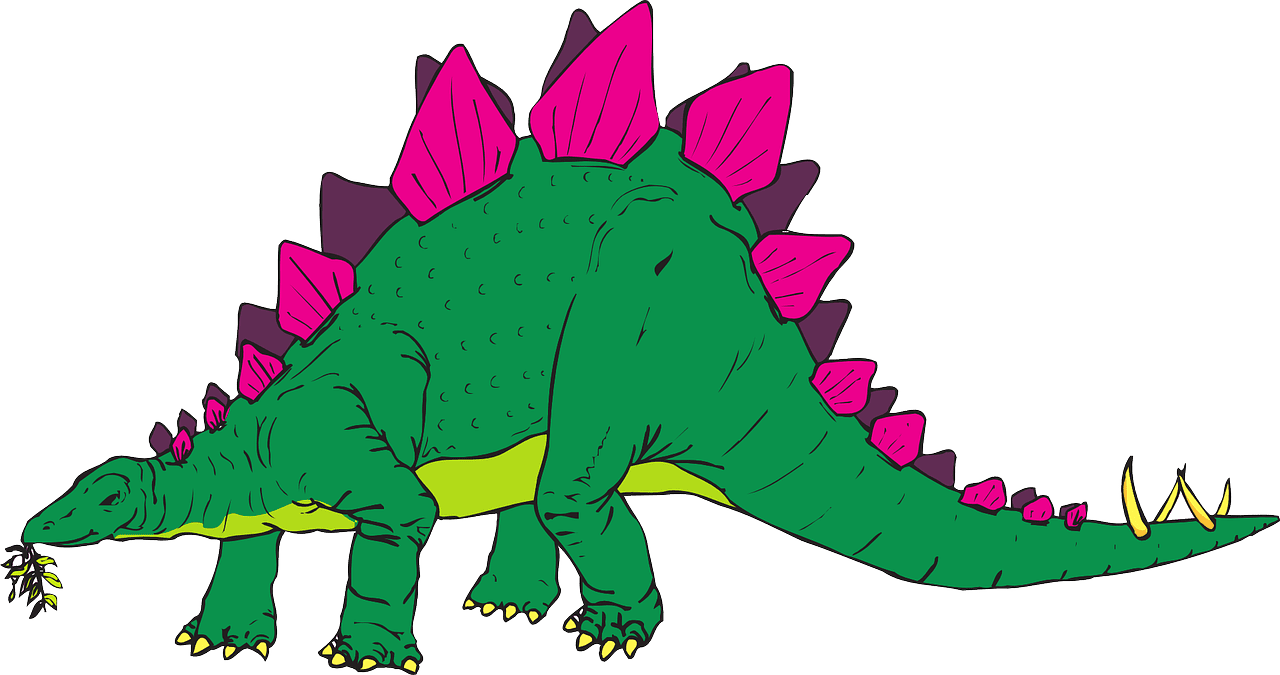
Brontosaurus
Brontosaurus was a gigantic herbivorous dinosaur. It lived in North America. It lived between 163 to 101 million years ago. It was between 21 to 22.8 meters tall and up to 22 meters long. It weighed up to 15 tons. The Brontosaurus skeleton was first discovered in 1879.
Brontosaurus had a large long neck and a long whip-like tail. The fore legs are shorter than the hind legs. The skeleton of the brontosaurus was first discovered in 1879. Scientists believe that Brontosaurus had a lifespan up to 100 years.
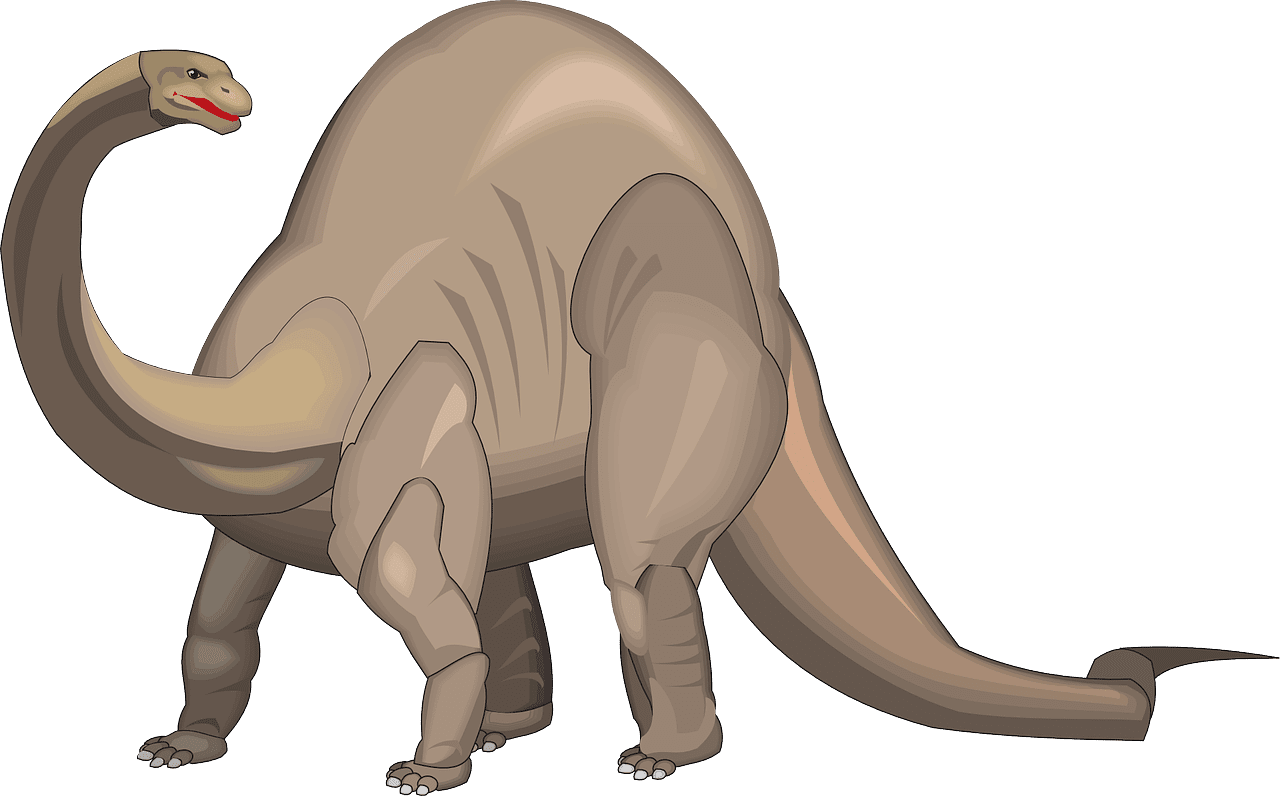
Tyrannosaurus
Tyrannosaurus is often called T- Rex. It was one of the biggest carnivores. It lived in Western North America. It lived about 66 to 68 million years ago. It was between 12.3 to 12.8 meters long and 3.66 meters tall. It weighed up to 7 tons. Tyrannosaurus parts were first found in 1892.
Tyrannosaurus had tiny arms, nearly useless. It has a very huge head. It primarily ate herbivorous dinosaurs. It had strong thighs and a powerful tail. It could eat up to 500 pounds of meat in one bite. Tyrannosaurus teeth were wide and somewhat dull.

Ceratosaurus
Ceratosaurus was a carnivorous dinosaur, meat-eater. It lived in Africa, Europe and North America. It existed 161 million years ago. IT weighed 670 kilograms. It was about 6 to 7 meters long and 2 meters tall. Ceratosaurus was first described in 1884.
Ceratosaurus had two powerful hind legs. It had two tiny arms. It had a very large head compared to the rest of its body. It had a short thick neck. Ceratosaurus had a horn behind its nostrils. It also has two horns above its eyes. Ceratosaurus has very long teeth.
Ankylosaurus
Ankylosaurus is considered an armored dinosaur. It lived in Western North America. It lived between 66 to 68 million years ago. Ankylosaurus was a herbivore, plant- eater. It was around 6 meters long and 1.2 meters tall. It weighed about 6000 kg.
Ankylosaurus had spikes on its body to protect it. It had a huge tail with a bony club on the end. It had a long low head. It had two horns pointing backwards from the back of the head. The first Ankylosaurus was first discovered in 1906.
Diplodocus
Diplodocus is a herbivorous dinosaur. It lived in mid-Western North America. It lived between 154 and 152 million years ago. It measured up to 27 meters long and was around 4.6 meters tall. It weighed about 30 tons. Diplodocus fossils were first found in 1877.
Diplodocus had very strong back legs and a long heavy tail. Its front legs were slightly shorter than the hind legs. It had a very large long neck that could reach 6 meters. It had a very small head compared to its size. Diplodocus was one of the longest dinosaurs.
Triceratops
The Triceratops is a herbivorous dinosaur. It lived about 68 million years ago. It lived in North America. It was up to 9 meters long and 9.5 to 9.8 tall. It weighed 5 tons. It was one of the largest dinosaurs. Triceratops fossils were first discovered in 1887.
Triceratops had two long row horns to defend themselves against meat-eaters. It also had a third shorter horn at the end of its nose. It had a large skull relative to its body. It had a large beak in front of its teeth. Triceratops was the latest and largest of the horned dinosaurs.
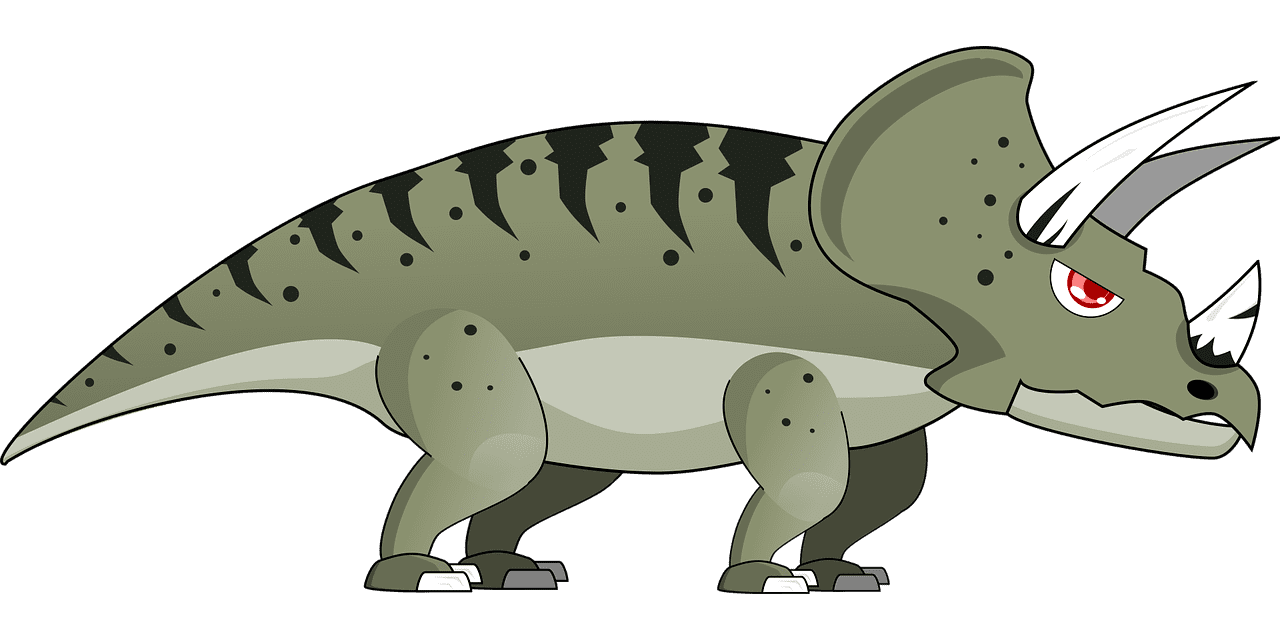
Iguanodon
Iguanodon is a kind of herbivorous dinosaur. It lived between 130 and 120 million years ago. It lived in Belgium, Germany, England, Spain, and possibly elsewhere in Europe. Iguanodon’s first evidence was discovered in 1822.
Iguanodon could move on two legs or four legs. It had powerful hind legs but shorter fore legs. Iguanodon had a long tail. It had a large narrow head and a hard bony beak. Iguanodon had a thumb spike that was used to defend itself against predators. Iguanodon was the second dinosaur to be discovered.
Spinosaurus
Spinosaurus was the largest of all known carnivorous dinosaurs. It lived in North Africa. It lived between 120 to 72 million years ago. It was up to 18 meters long. It weighed up to 20 tons. Spinosaurus’s first partial skeleton was first discovered in 1912.
Spinosaurus had a long thick skull. It had powerful jaws with straight teeth. It had nostrils near the eyes. Its teeth were straight and conical. The fore legs were large and stocky. Spinosaurus had very tall spines growing on its back. Spinosaurus was featured in the well known movie, Jurassic Park 3.
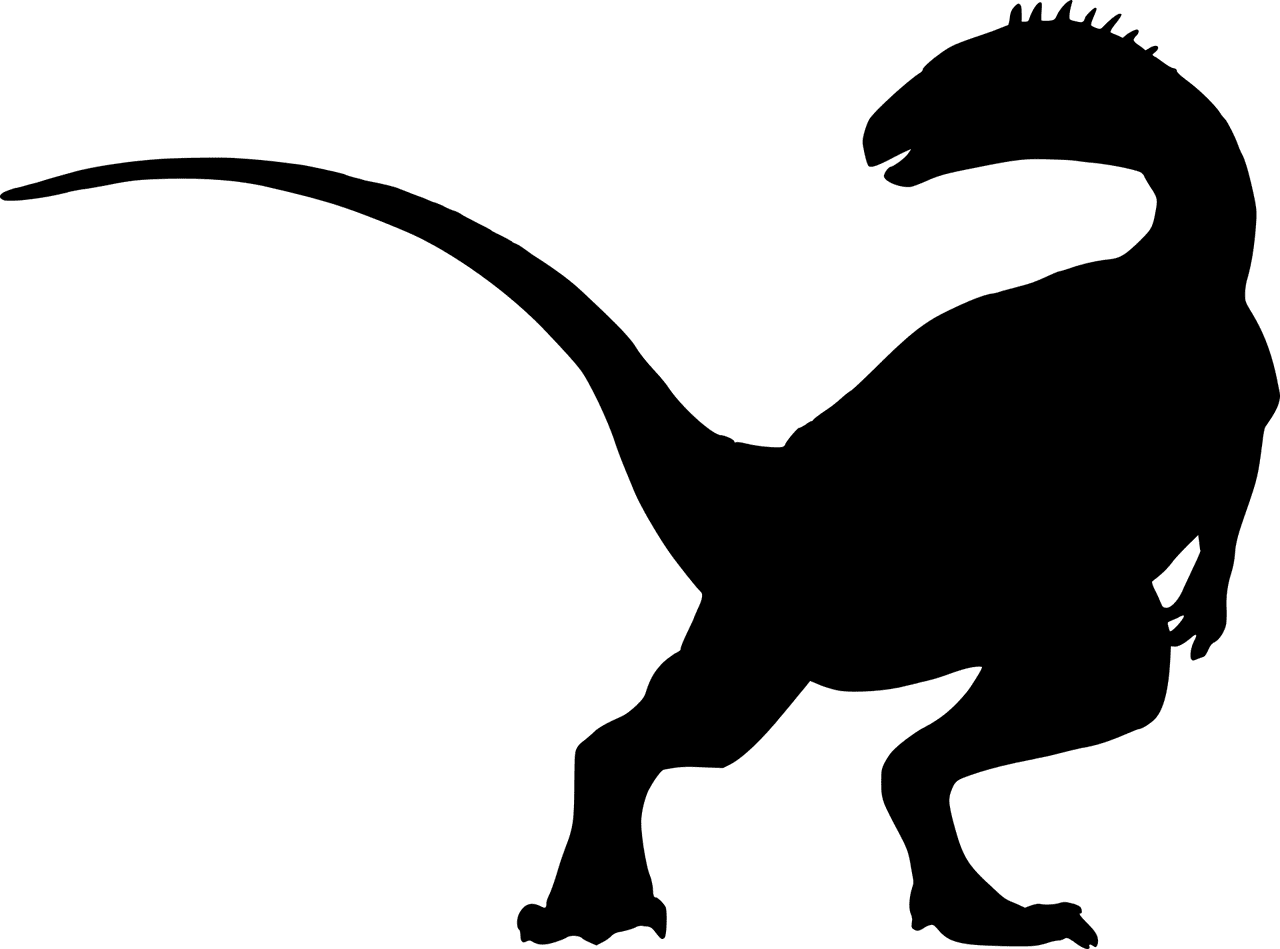
Velociraptor
Velociraptor is a carnivorous dinosaur. It lived in Mongolia and China. It lived nearly 70 to 75 million years ago. The Velociraptor was 1.8 meters long. It weighed no more than 45 kg. The first Velociraptor fossil was recovered in 1923.
Velociraptor was discovered to be a feathered dinosaur. It had numerous similarities with birds except that it couldn’t fly. It also had hollow bones and tended nests of eggs. It had very powerful back legs with long claws. Velociraptors had a large brain that’s why they could probably be one of the most intelligent dinosaurs.
10 Facts about Dinosaurs
1- Dinosaurs first appeared between 243 and 233 million years ago.
2- Dinosaurs were the biggest animals ever to have walked on land.
3- The word “dinosaur” was originally coined by a British scientist named Richard Owned in 1842.
4- There were more than 700 species of dinosaurs.
5- Dinosaurs lived on all continents. Scientists discovered fossils in all continents.
6- The vast majority of dinosaurs were plant eaters.
7- Dinosaur lifespans probably varied in length from tens of years to hundreds of years.
8- The longest dinosaur was Argentinosaurus, which measured over 40 meters.
9- The longest dinosaur was Argentinosaurus, which measured over 40 meters.
10- The first ever dinosaur to be given a name was the Megalosaurus.
Dinosaur Fossils
Fossils are the physical evidence of dinosaurs like bones and teeth. One of the dinosaur researchers said that most of the dinosaur fossils found were for animals that were living near a lake or a river. Some were washed into rivers, others were covered in mud.
There is a way for dinosaurs to fossils. First, they die. Then their bodies start to rot away. Their bodies are usually buried by mud or sand before disappearing completely. Later, more layers of sediment put a lot of weight and pressure on the below layers. Then they turn into sedimentary rocks. During this process, the water turns bones and teeth into stones. It could take thousands or million years.
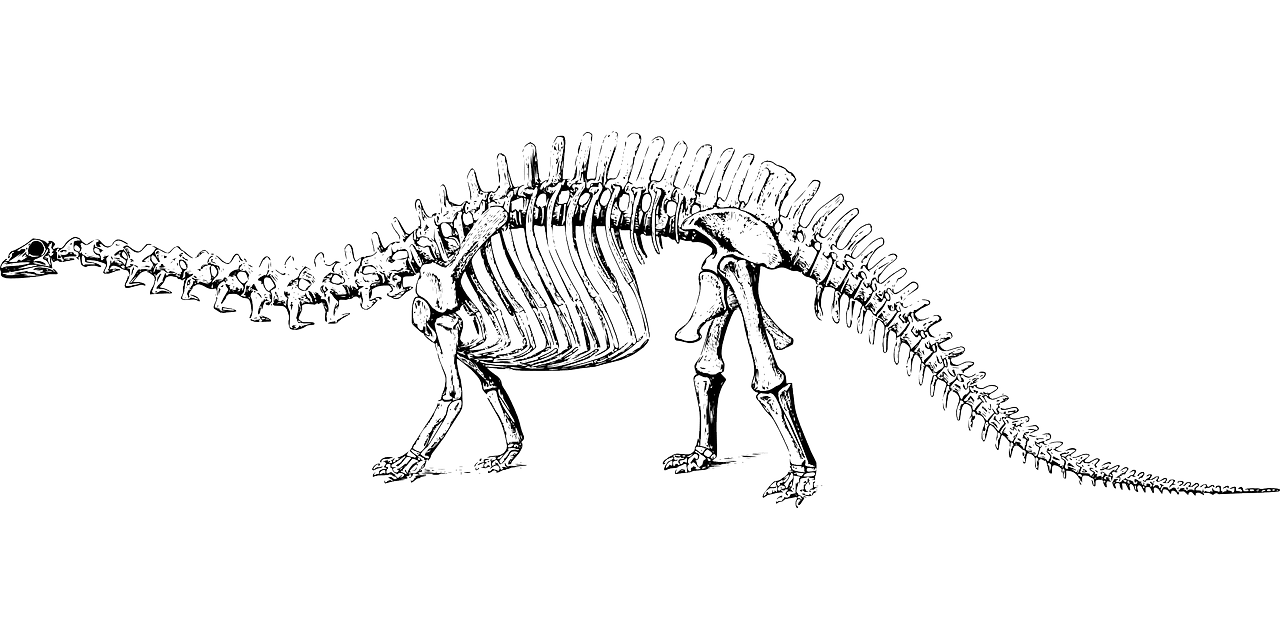
Dinosaur Footprints
Dinosaurs’ footprints have been made when they walked on mud or sand. Scientists track the footprints. Footprints give clues about dinosaurs’ habitat, shape and size. For example, if the set of tracks is deep, this means that the dinosaur is heavy.
Footprints are evidence of animals’ activities when they were alive. Scientists can’t exactly tell which dinosaur species made the track. Many dinosaurs have similar-looking feet. However, scientists are able to identify which dinosaur group makes the track.
History of Dinosaurs
Dinosaurs lived between 243 and 233.3 million years ago. The earth was one big continent. The weather as well was different at the time of the dinosaurs. It was hot and dry. The earliest dinosaurs were small. Overthe time, dinosaurs kept changing into different types.
Dinosaurs evolved into two main types, the Saurischians and the Ornithischians.
There are over 800 groups of dinosaurs under these two main types. The first scientist to find dinosaur fossil was a British scientist called Reverend Robert Plot. He discovered the first fossil of dinosaurs in 1640.
Dinosaur Habitats
Dinosaurs didn’t live in the same place due to climate changes and geographical changes. Dinosaurs had to live in different environments. Some dinosaurs lived on dry land while others lived near rivers or lakes.
Plain environments are inhabited by plant-eater dinosaurs. Plains were vast lands. There were prehistoric types of plants different from those today. This was during the Cretaceous period which started 145 million years ago and ended 66 million years ago.
Wetlands were another habitat for dinosaurs. According to scientists, wetlands covered much of modern Europe between 145 to 66 million years ago. Wetlands were plains covered with water and flooded with sediments from nearby hills and mountains. Dinosaurs fed on a prehistoric plant was known as horsetails.
Lagoons are one of the habitats of dinosaurs. Scientists said that lagoons were over-represented in the fossil record. Due to the nature of lagoons, dead organisms were easily preserved in silt. The most famous prehistoric lagoons were located in Europe.
Polar regions are another habitat. Polar regions are modern-day Australia and Antarctica. This was between 251 to 66 million years ago. Dinosaurs in polar regions had to live with darkness for up to 6 months each year. Polar regions also had freezing temperatures and scarce resources.
Dinosaur Bones
Dinosaur bones are not what we see in the museum today. Dinosaur bones turned into rocks. When dinosaurs died, their bodies were covered by sediments. At times, minerals in the water replace the hard parts of the bodies and what’s left is a solid rock.
What was the Life Cycle of a Dinosaur?
A life cycle is several stages during life from birth to growth and death. The life cycle of a dinosaur starts in a hard-shelled egg. Eggs were different in size and shape depending on the species of the dinosaurs. Dinosaur eggs looked like birds more than reptiles.
Dinosaurs grew rapidly in the early years of life while they slowed in the adulthood stage. Baby dinosaurs had to find food, whether plant eaters or meat eaters. At this stage, dinosaurs needed to take care of themselves not to be eaten by the enemies.
Herbivorous dinosaurs depended on different kinds of plants. Carnivorous dinosaurs were meat-eaters. They ate other types of smaller dinosaurs or other dead animals. Some carnivorous dinosaurs even ate the eggs of other dinosaurs.
How did Dinosaurs Become Extinct?
Dinosaurs have lived for 165 million years. They ruled the earth between 243 to 233 million years ago. An animal is extinct when it doesn’t exist anymore anywhere in the world. Dinosaurs among other animals went extinct 66 million years ago.
Theories about Dinosaur Extinction
There are many theories about the reasons why dinosaurs became extinct. Some of the factors that led to the extinction of dinosaurs were climate change, geological events and food scarcity. The extinction of dinosaurs is known as Cretaceous-Tertiary extinction.
The most accepted theory of dinosaur extinction is the asteroid impact. There was a huge asteroid that hit the earth. Suddenly right after this, dinosaurs disappeared. Scientists said that this impact could result in massive damage including climate change. The asteroid impact caused herbivorous and carnivorous dinosaurs to die out of hunger.
The asteroid impact caused a great crater on Earth. It also caused huge waves and earthquakes. Fires started. The atmosphere was full of gases which caused climate change. The temperature became cooler along with acid rain. The air was filled with a huge cloud of dust. This caused many plants to die.
The theory of volcanoes is another theory of dinosaur extinctions. Many scientists support the theory that the massive volcano that erupted, in India, was the main factor behind dinosaur extinction. These eruptions caused a huge amount of dust which affected the climate. It was difficult for dinosaurs to adapt.
Dinosaur Attractions Around the World
Kids are always interested in dinosaurs, how they looked, how long and huge they were and if they were really the same as what they watch on T.V Kids are happy to visit any place where they can see dinosaurs. There are many attractions all over the world.
Museum für Naturkunde Berlin in Germany is a favourite museum for kids to visit. It is one of the three major museums in Germany. Giraffatitan is exhibited in the central hall of the museum. It is considered the largest dinosaur skeleton in the world. It is about 12 meters tall and 22.5 meters long.
Museo Jurásico de Asturias Asturias, Spain is one of the most famous museums in the world. There is a great collection of fossils and footprints exhibited in the exhibition hall. It is said that this collection is “the most complete informative and representative collection of dinosaur remains in the world.”
Royal Belgian Institute of Natural Sciences Brussels, Belgium is considered the largest dinosaur gallery in the world. It contains 30 fossilized Iguanodon skeletons which were discovered in 1878 in Belgium. The dinosaur hall of the museum is the largest hall completely dedicated to dinosaurs in the world.
Fukui Dinosaur Museum, (Katsuyama, Japan) is one of the best museums in the world. It contains a complete skeleton of a dinosaur. There are huge dinosaur dioramas. It has the largest dinosaur discovery site in Japan. Visitors can take a tour for 20 minutes on the site.
Best Dinosaur Parks around the World
Field Station, New Jersey, is one of the most amazing dinosaur parks in the world. There is a collection of lifelike dinosaurs that make children feel it is a real world of dinosaurs. More than 15 dinosaurs move and walk around the park. There is also a mini theatre.
The Si Wiang Dinosaur Park is another well-known tourist attraction in Thailand. There are more than 100 statues of dinosaurs that represent fossils of the dinosaurs that were discovered in Thailand. The statues can move and make sounds too.
Jurassic Journey, U.K, is one of the most amazing parks in the world. Children can see dinosaurs roaring in the rustic surroundings. Dinosaurs move and breathe in front of the children. Children can also touch real fossils of dinosaurs. Jurassic Journey is a great adventure for children.
Dinosaur World Park, Florida, is one of the best parks in the world for children to be exposed to lifelike dinosaurs. There are life-sized dinosaurs. Children have the chance to touch real dinosaur bones. Children can see how dinosaurs lived in their natural habitat.
Dinosaur Valley Park is a special experience for children. Children can track dinosaur footprints and can walk on them. Dinosaurs left their footprints in the mud of an old ocean. Children can track these footprints in the riverbed when they are visible.
Most Common Questions about Dinosaurs
Kids always inquire about dinosaurs. They want to know everything about them. Kids have many questions in mind. Some of these questions are: How do we know about dinosaurs? How many dinosaurs were there? Where did dinosaurs live? What happened to dinosaurs? How did dinosaurs look?
There are actually various ways for kids to find answers to their questions. Information is available in scientific books for kids, including Dinosaurs by Thomas R Holtz. As well, Nat Geo Kids is one of the great scientific TV channels for kids. Kids can also find information online.
Kids Research about Dinosaurs
Kids can do their own research about dinosaurs on their own. One of the tools to find information is websites. Kids.nationalgeographic.com is one of the commonly known websites that present suitable information for kids.
Vocabulary is very important for kids to search about dinosaurs. Vocabulary has to be related to the topic to find better results. Kids can use words like fossils, extinct, skeleton, prehistoric, jurassic and bones.
Books are another source of information. Dinosaurs by Thomas R Holtz is one of the amazing books. How to catch a dinosaur is one of the best-seller books that include a lot of great information. We Love Dinosaurs by Lucy Volpin is one of the favourite books for kids.
Facts books are also great resources for information about dinosaurs. There are various fact books that address the kids. Dinosaur Encyclopedia is one of the best facts books for kids. Dinosaur Ultimate Handbook includes facts about over 150 species of dinosaurs.
Interesting Facts about Dinosaurs
Bizarre dinosaurs are one of the most interesting facts about dinosaurs. Epidendrosaurus is one of the rarest dinosaurs. It was a tree-climbing dinosaur. It was very small. It had grasping arms and clawed feet.
Another bizarre dinosaur is Longisquama. It was only 6 inches long and weighed a few ounces. It had feather-like plumes. Longisquama used its plumes to get some left when it jumped from tree to tree.
What’s the Smallest Dinosaur?
The smallest dinosaur in the world was Oculus Dentavis khaungraae. It weighed less than 28 kilos. It was the size of a little robin. The fossil’s head is smaller than a blueberry. It was a meat eater.
What’s the Largest Dinosaur?
Amphicoelias is believed to be the biggest dinosaur. It was about 60 meters long. It weighed about 120 tons. It was a plant eater dinosaur. Amphicoelias fossils were first discovered in 1877 in Colorado.
Could Dinosaurs Swim?
Spinosaurus is probably the biggest meat eater dinosaur. Scientists believe that it lived on land and in water. It could swim and hunt as it had webbed feet. It ate sharks and fish.
Are There Flying Dinosaurs?
Scientists used the word dinosaur for a specific type of creature. There were no flying dinosaurs, instead,, they were flying reptiles. Some dinosaurs had feathers still it was not proven from their fossils that they could fly.
What is the Food Chain For Dinosaurs?
There were two types of dinosaurs, herbivores and carnivores. Herbivorous dinosaurs got their energy from the plants they ate. Plants get their energy from the sun. Carnivorous dinosaurs got their energy from other animals they ate, Most probably the plant-eating dinosaurs.
Dinosaurs are sharing the planet with us anymore. Researchers and scientists are still working on discovering more fossils and traces of dinosaurs. Scientists keep developing their theories about dinosaur extinction. Still, there is a lot we don’t know about dinosaurs.
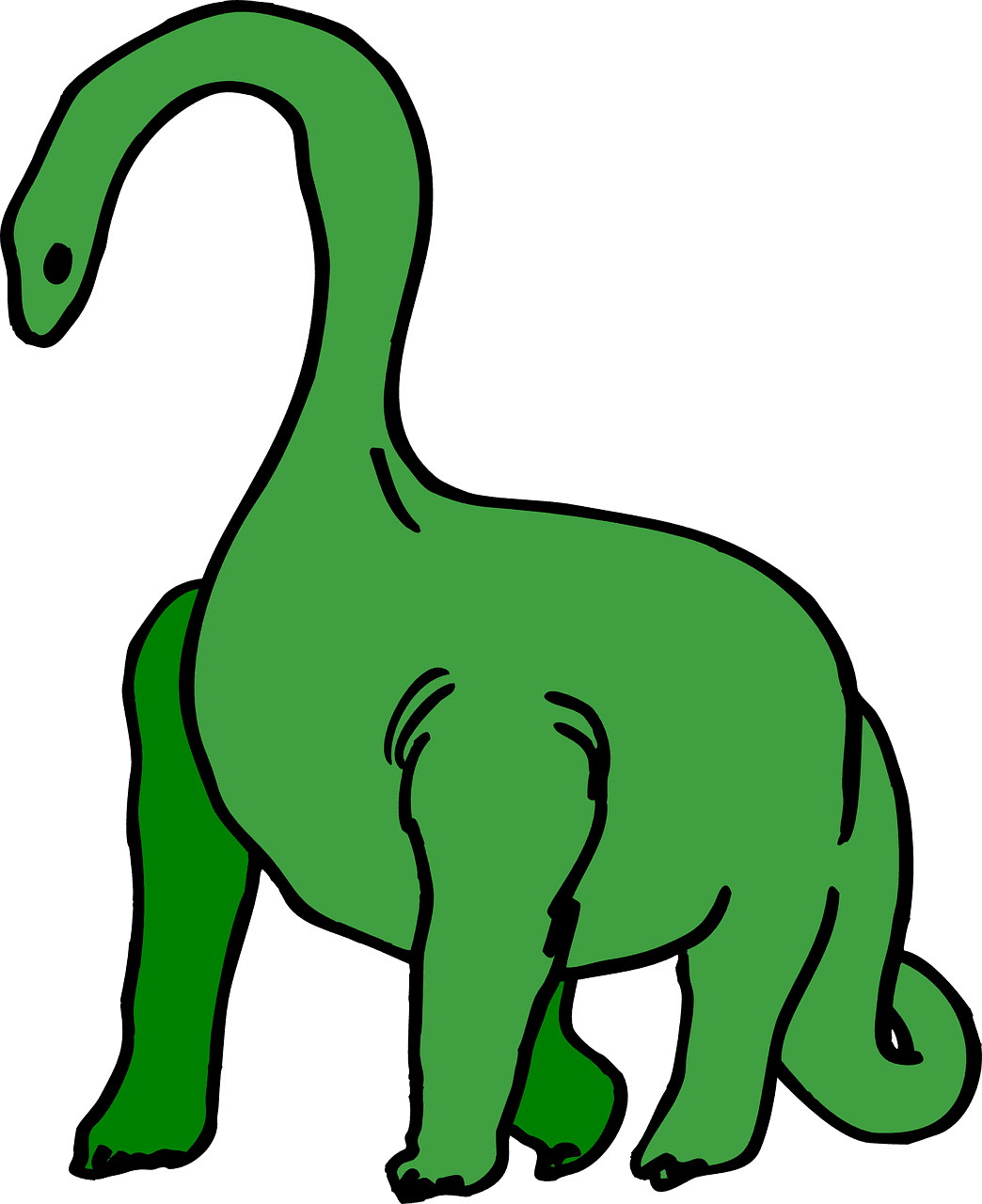
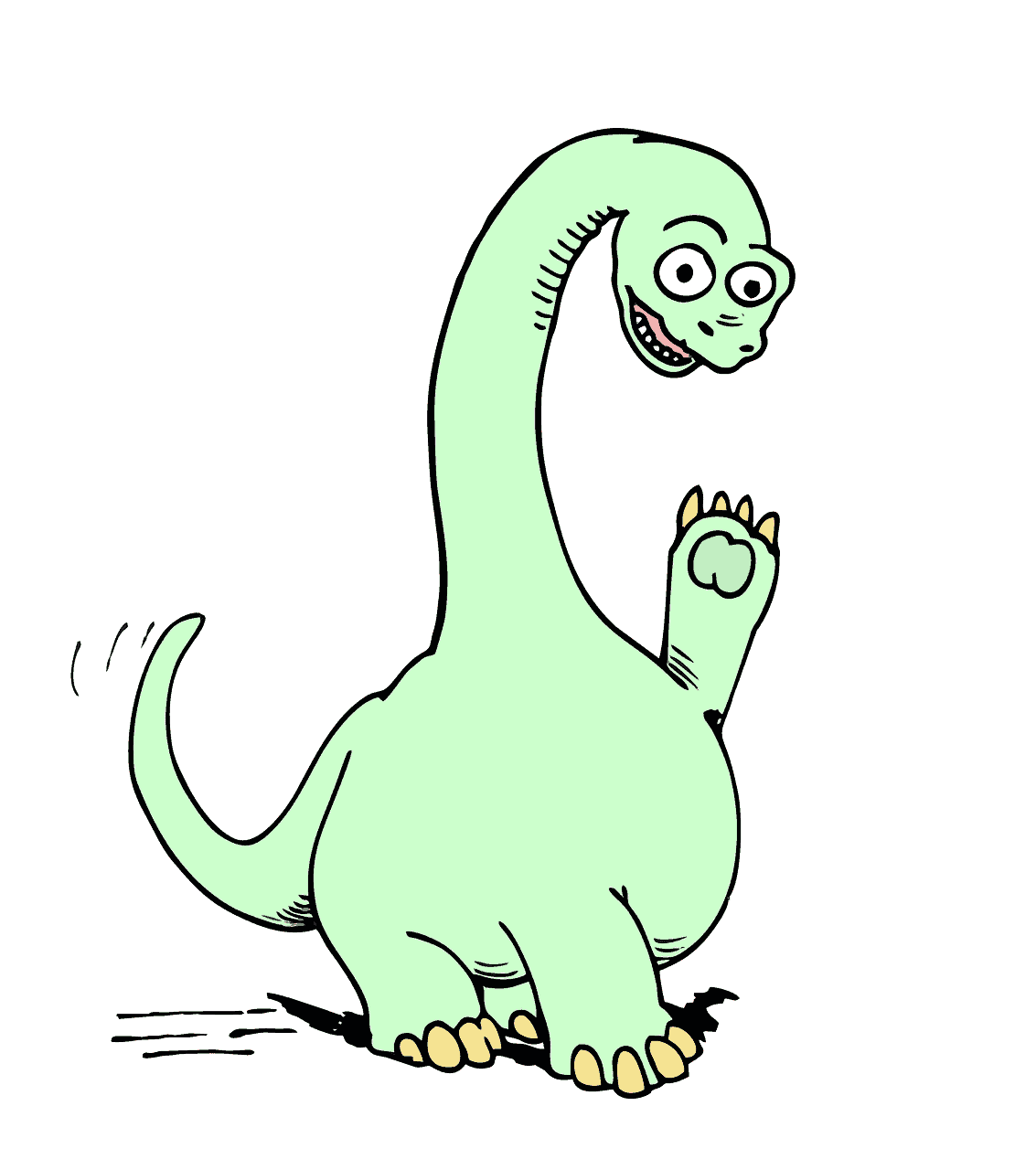


Leave a Reply